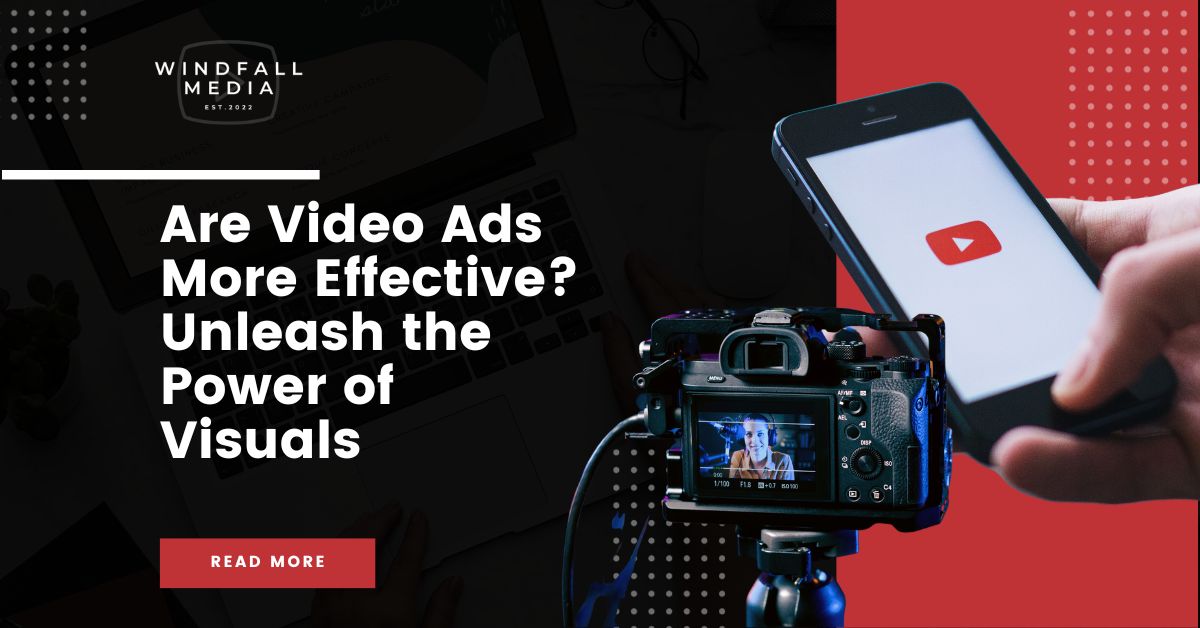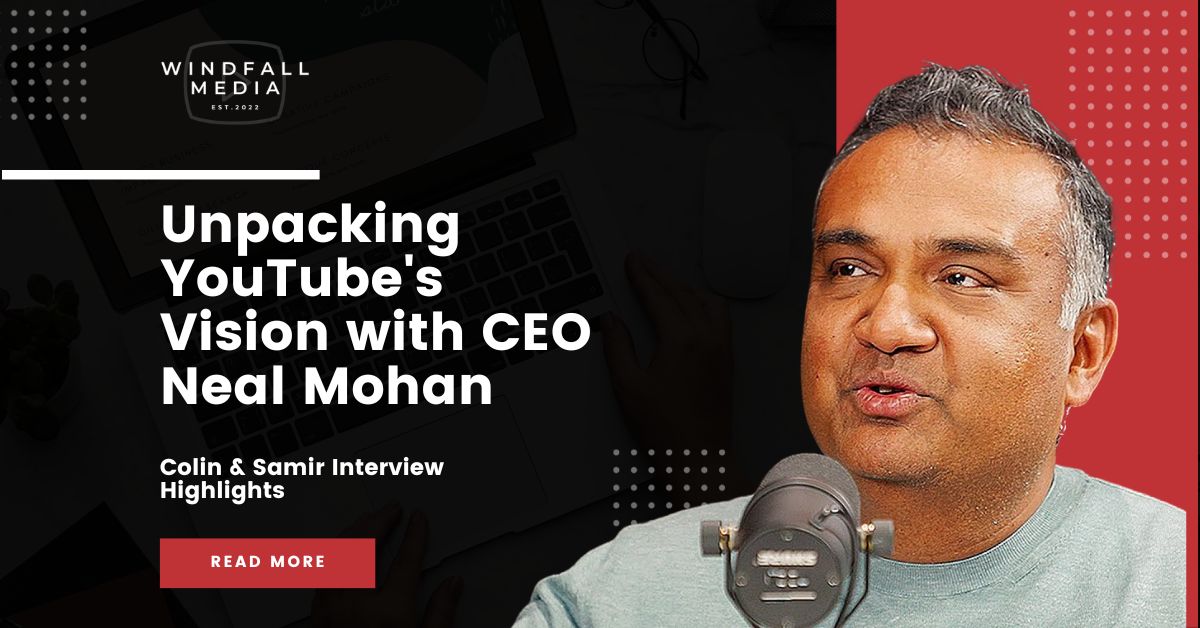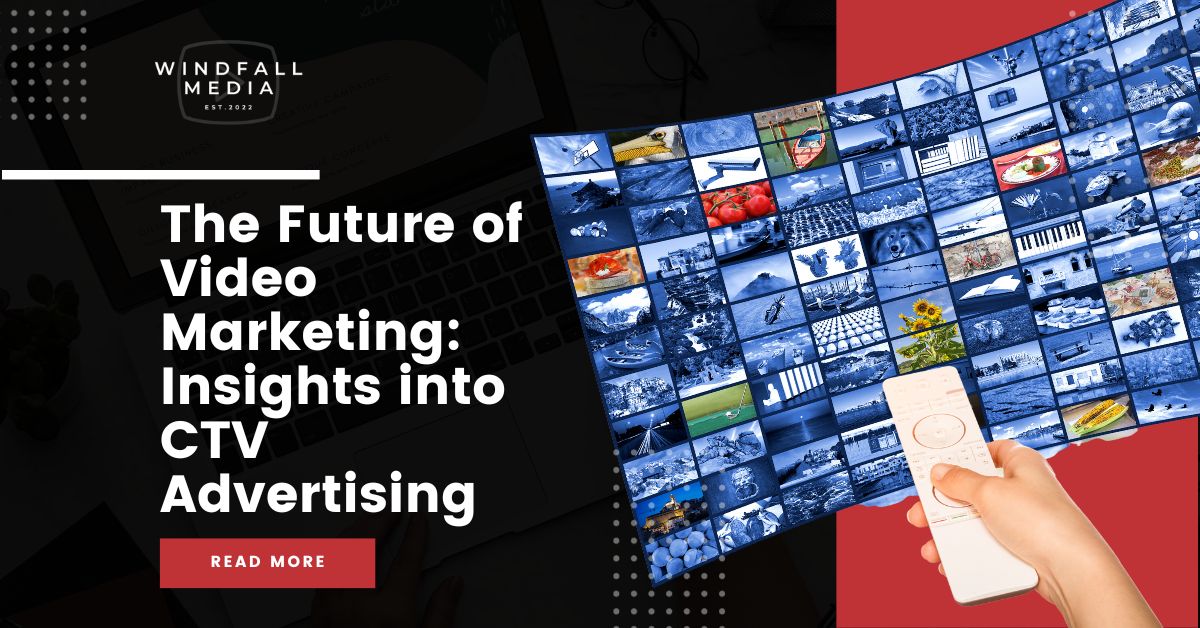Today, more than ever, consumers are constantly bombarded with information. Standing out in the crowded marketplace has become more challenging than ever. Brands are in a perpetual quest to find the most effective ways to reach their audience and leave a lasting impression.
Enter digital video advertising—a medium that has revolutionized the way businesses communicate their value proposition. But what makes video ads so compelling? Are video ads more effective than their textual or image-based counterparts?
We plan to answer all of your questions surrounding the world of video advertising, exploring its growing popularity, the science behind its effectiveness, real-world success stories, and a glimpse into its promising future. Whether you’re a seasoned marketer or a business owner looking to venture into video advertising, this comprehensive guide offers valuable insights to help you navigate the dynamic landscape of video marketing.
Table of Contents
The Growing Popularity of Video Ads
It’s no secret video content has emerged as a dominant force in the world of online advertising. The shift from traditional advertising mediums to video is evident, and the numbers speak for themselves:
- Rising Consumption: According to a report by Cisco, video traffic will make up 82% of all consumer internet traffic by 2022, up from 73% in 2017. This surge indicates the increasing preference of consumers for video content over other formats.
- YouTube’s Dominance: With over 4 billion videos watched daily, YouTube stands as the second-largest search engine after Google. It’s not just a platform for entertainment, education and inspiration but also a significant marketing channel for businesses to reach their target audience.
- B2B Video Consumption: A staggering 92% of B2B prospects consume online video, showcasing the importance of video content not just for B2C but also for B2B marketing strategies.
- Video Ads and Sales: Major online retailers have found a direct correlation between video ads and sales. For instance, platforms like Amazon and eBay reported that adding a video ad to a product description can boost sales by up to 35%.
- Mobile Video Consumption: The rise of smartphones has further fueled the growth of video ads. Approximately 88% of short videos are watched to completion on mobile devices, emphasizing the importance of optimizing video ads for mobile viewing.
The Science Behind Video Ad Effectiveness
The effectiveness of video ads isn’t just a result of changing consumer preferences or technological advancements. There’s a deep-rooted psychological and neurological basis that makes video content more impactful than other forms of advertising. Let’s review the science behind it:
- Visual Processing: The human brain processes visuals 60,000 times faster than text. This means that when viewers watch a video, they can comprehend and retain the information more quickly and efficiently than reading a block of text.
- Emotional Connection: Videos have the unique ability to convey emotion through visuals, sound, and storytelling. This combination engages multiple senses simultaneously, creating a deeper emotional connection. According to a study by Harvard Business Review, emotionally charged content is more likely to be shared, leading to higher virality.
- Mirror Neurons: When we watch someone perform an action in a video, our brain’s mirror neurons activate, making us feel as if we’re performing the action ourselves. This phenomenon can be leveraged in video ads, especially in product demonstrations, making viewers feel more connected to the product or service.
- Trust and Authenticity: Videos, especially those featuring real people, testimonials, or behind-the-scenes content, build trust. Viewers can see the product in action, hear genuine reviews, and get a sense of the brand’s authenticity. A study by Animoto found that 93% of consumers consider video helpful in making purchase decisions.
- Memory Retention: Information presented in video format is more likely to be remembered than text. A report by Insivia highlighted that viewers retain 95% of a message when they watch it in a video, compared to 10% when reading it in text.
In essence, the science behind video ad effectiveness lies in our brain’s natural inclination towards visual storytelling, emotional engagement, and trust-building. As the digital landscape becomes more saturated, leveraging the power of video advertising, backed by scientific understanding, can give your business a competitive edge.
Longer vs. Shorter Video Ads: Which is More Effective?
The debate between the effectiveness of longer versus shorter video ads has been ongoing in the marketing world. While conventional wisdom might suggest that shorter ads cater to our dwindling attention spans, recent studies and trends indicate there’s more to the story of video than just length:
The Case for Shorter Video Ads:
- Instant Engagement: Short video ads, especially those under 15 seconds, are designed to capture attention immediately. They’re often used for brand awareness campaigns where the primary goal is to make a quick, memorable impression.
- Platform Suitability: Platforms like Instagram Stories and TikTok, which cater to shorter content, have made short video ads a staple for many marketers targeting younger demographics.
- Budget-Friendly: Shorter ads can be less expensive to produce and are often used by brands with tighter budgets or for campaigns with a broader reach.
The Case for Longer Video Ads:
- Deep Dive: Longer ads, especially those ranging between 31-60 seconds or even longer, allow brands to delve deeper into storytelling, product demonstrations, or detailed explanations. According to Search Engine Land, longer video ads have shown better performance in terms of engagement and conversions.
- Building Emotional Connections: Longer ads provide the time and space to build an emotional narrative, connecting with viewers on a deeper level.
- Higher Conversion Rates: Major online retailers have found that longer video ads can lead to higher conversion rates. For instance, platforms like Amazon and eBay reported that adding a longer video to a product description can boost sales by up to 35%.
Striking the Right Balance:
- Know Your Audience: The effectiveness of video length often depends on the target audience. While younger viewers might prefer quick, snappy ads, an older demographic might appreciate a more detailed approach.
- Platform Matters: Tailor the video length to the platform. For instance, while a 30-second ad might work well on YouTube, a shorter, more direct ad might be more suitable for Instagram Stories.
- Test and Optimize: It’s essential to test different video lengths to see what resonates best with your audience. Use analytics to gauge engagement, click-through rates, and conversions to determine the optimal video length for your campaigns.
While both shorter and longer video ads have their merits, the key lies in understanding the campaign’s objectives, the target audience, and the platform’s nuances. By aligning these factors, your business can create video ads that effectively engage and convert your ideal customers.
Some of our best performing ads have been long form content, over 90 seconds. In fact, we had one video that was over 9 minutes long that had a huge conversion rate! When it’s the right message, the right person at the right time you have a lot of freedom to be creative and test what works best for your brand.
Key Benefits of Video Advertising
Video advertising has become an indispensable tool in the marketer’s arsenal, and for good reasons. The dynamic nature of video content offers a plethora of benefits that other mediums often can’t match. Here are the key advantages of integrating video into your advertising strategy:
- Boosting Sales and Conversions: Video content can lead directly to sales. Studies have shown that product videos can increase purchases by up to 35% on online retail sites.
- Enhancing SEO: Search engines love video content. Websites with embedded videos are more likely to rank higher on search engine results pages, leading to increased visibility and organic traffic. In fact, a website is 53 times more likely to reach the front page of Google if it includes video.
- Building Trust: Video content is instrumental in creating a sense of trust among viewers. Demonstrations, testimonials, and behind-the-scenes looks can humanize your brand and make it more relatable. More and more consumers want to buy from people they know, like and trust rather than faceless brands.
- Encouraging Social Shares: Video content is more likely to be shared on social media than any other type of content. This virality can significantly enhance brand awareness and reach.
- Complex Information Made Simple: Videos can break down complex information into digestible chunks. Explainer videos, animations, and infographics can convey intricate ideas in a manner that’s easy to understand.
- Engaging the Lazy Buyer: Reading long product descriptions can be tedious. Videos offer an easier alternative for people to get the information they need about a product or service. If a picture is worth 1000 words, videos are priceless.
- Building Emotional Connections: Through storytelling, music, and visuals, videos can evoke emotions in viewers, making them more likely to take action.
- Powerful Analytics: Platforms like YouTube and Facebook provide detailed analytics on video performance. These insights can help marketers understand their audience better and optimize future campaigns.
Incorporating video advertising into your marketing strategy can offer a competitive edge, ensuring that your brand remains relevant and resonant in an ever-evolving digital landscape. Without video you wouldn’t even be able to reach the enormous audience YouTube or connected TV. We run campaigns across multiple video platforms that outperform other platforms at certain key metrics.
Practical Tips for Creating Impactful Video Ads
Crafting a compelling video ad requires more than just high-quality visuals and sound. It’s about resonating with your audience and conveying your brand’s message effectively. Here are some practical tips to ensure your video ads leave a lasting impression:
- Understand Your Audience: Before diving into production, have a clear understanding of who your target audience is. What are their preferences, pain points, and aspirations? Tailoring your video content to address these aspects can enhance its effectiveness.
- Start Strong: The first few seconds of your video are crucial. Capture the viewer’s attention immediately with a compelling hook, intriguing visuals, or a thought-provoking question.
- Keep It Relevant: Ensure that your video content aligns with the platform and the audience it targets. For instance, a snappy, fun video might work well on TikTok, while a more detailed explainer video might be suitable for YouTube.
- Leverage Storytelling: Narratives are powerful tools for engagement. Craft a story around your product or service that resonates emotionally with viewers, making them more likely to take action.
- Optimize for Mobile: With a significant portion of video content consumed on mobile devices, ensure your video ads are optimized for mobile viewing. Consider vertical video formats and clear visuals that stand out on smaller screens.
- Include a Clear Call-to-Action (CTA): What do you want viewers to do after watching your video? Whether it’s visiting your website, signing up for a newsletter, or making a purchase, ensure your CTA is clear and compelling.
- Test and Iterate: Use A/B testing to determine which video versions resonate most with your audience. Analyze metrics like view duration, click-through rates, and conversions to refine your video ad strategy.
- Use High-Quality Visuals and Sound: While content is king, the quality of your visuals and sound can make or break your video ad. Invest in good equipment or consider hiring professionals for production.
- Keep It Authentic: Authenticity builds trust. Instead of hard-selling, focus on genuine storytelling, user testimonials, or behind-the-scenes looks to create a more authentic connection with viewers.
- Stay Updated with Trends: The digital landscape is ever-evolving. Stay updated with the latest video trends, platform updates, and audience preferences to ensure your video ads remain relevant and effective.
By incorporating these practical tips into your video ad creation process, you can craft content that not only captures attention but also drives action, ensuring a higher return on your advertising investment.
Case Studies: Real-world Successes with Video Advertising
Video advertising has transformed the way brands connect with their audience. From startups to global giants, many have leveraged the power of video to achieve remarkable results. Here are some notable case studies that showcase the impact of effective video advertising:
Dollar Shave Club’s Viral Hit:
- Overview: Dollar Shave Club, a subscription-based razor company, launched a humorous video ad titled “Our Blades Are F***ing Great” in 2012.
- Impact: The video went viral, garnering over 26 million views on YouTube. It played a significant role in the company’s rapid growth, leading to its eventual $1 billion acquisition by Unilever.
- Key Takeaway: Humor, when done right, can make a video ad memorable and shareable, leading to exponential growth.
Airbnb’s “Wall and Chain” Campaign:
- Overview: Airbnb released a touching animated video titled “Wall and Chain” that narrated a true story of two former guards from opposite sides of the Berlin Wall reuniting after 25 years.
- Impact: The video garnered millions of views and significantly boosted Airbnb’s brand image, emphasizing the platform’s role in creating meaningful connections.
- Key Takeaway: Emotional storytelling can resonate deeply with viewers, enhancing brand loyalty and trust.
Slack’s Explainer Video:
- Overview: Slack, a team collaboration tool, used an explainer video to demonstrate its platform’s features and benefits.
- Impact: The video played a pivotal role in Slack’s early growth, helping potential users understand the platform’s value proposition clearly.
- Key Takeaway: For products or services that are new or complex, explainer videos can simplify the message and drive conversions.
Anderson Business Advisors Tax & Asset Protection Events:
- Overview: Anderson Business Advisors uses educational videos to help real estate investors understand the benefits of structuring their business entities and protecting their assets.
- Impact: In 2022 and 2023 we used video ads to generate thousands of high quality leads per month for their industry leading virtual events.
- Key Takeaway: For high touch service based businesses, video ads that provide value, build trust and convert is a technique that delivers wins across the board!
These case studies underscore the true power of video advertising. Whether it’s through humor, emotional storytelling, or clear explanations, effective video ads can drive brand awareness, engagement and conversions.
The Future of Video Advertising
As technology continues to evolve, the landscape of video advertising is set to undergo transformative changes. From the integration of augmented reality to the rise of interactive videos, the future promises exciting opportunities for brands to connect with their audience. Here’s a glimpse into what lies ahead:
Interactive Video Content:
- Overview: Interactive videos allow viewers to engage with the content actively, be it through clickable links, embedded forms, or branching narratives.
- Impact: By offering a more immersive experience, interactive videos can boost engagement rates, prolong viewing times, and enhance personalization.
Augmented and Virtual Reality:
- Overview: AR and VR technologies offer immersive experiences, transporting viewers to virtual worlds or enhancing the real world with digital overlays.
- Impact: Brands can leverage AR and VR for virtual product trials, immersive storytelling, and creating memorable brand experiences.
360-Degree Videos:
- Overview: These videos offer a panoramic view of scenes, allowing viewers to explore every angle by dragging the video screen.
- Impact: Especially popular in the travel and real estate sectors, 360-degree videos offer a more comprehensive and engaging view of locations and properties.
AI in Video Creation:
- Video Ideation: AI tools can analyze vast amounts of data to predict content trends, helping brands identify potential video topics that resonate with their audience. Tools like VidIQ integrate with ChatGPT to create a complete suite of tools to manage and streamline the video creation process.
- Generative AI: With advancements in AI, it’s now possible to create realistic video content without human actors. Generative AI can produce lifelike avatars, eliminating the need for people to be on camera. It also means people can create deep fakes which will certainly lead to controversy and confusion.
- AI-Powered Editing: Tools like GetMunch utilize AI to streamline the video editing process. They can automatically generate short clips from long-form content, ensuring that the most engaging parts are highlighted.
The future of video advertising is poised at the intersection of technology, creativity, and consumer behavior. By staying updated with these trends and leveraging the power of tools like AI, brands can ensure that their video content remains impactful, relevant, and future-ready.
So Are Video Ads More Effective?
The digital marketing industry has presented businesses with a myriad of advertising options, leading many to ask, “are video ads more effective?” As we’ve explored throughout this article, the answer is a resounding yes.
Video advertising has not only demonstrated its superiority in terms of engagement and conversion but has also showcased its ability to forge deeper emotional connections with audiences. From the science behind its effectiveness to real-world success stories, it’s evident that video ads hold a unique power in the marketing world.
As technology continues to evolve and consumer preferences shift, one thing remains clear: video advertising is not just a fleeting trend but a cornerstone of modern marketing. Brands that recognize and harness this power will undoubtedly position themselves at the forefront of their industries.






